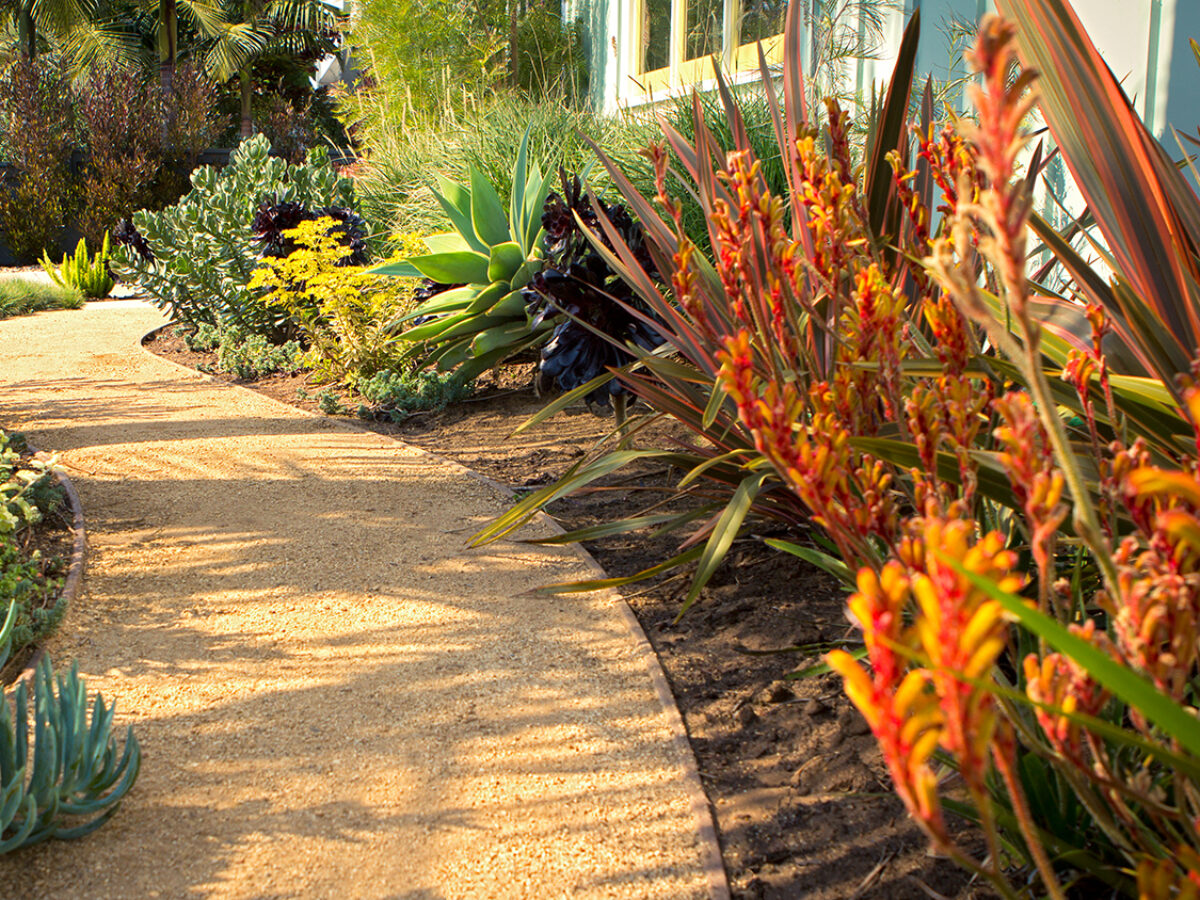
Have a Low-Water Garden? Here’s a Year-Round Checklist to Care for It
Landscape architect June Scott shares her indispensable guide.

We all know that as the Earth’s climate warms up, conserving water is important, and that the best way to do that is with natives and low-water plants. But one of the lovely benefits of native plants is that greenery suited to its particular climate looks like it belongs. “A low-water garden feels and looks right in much of the West,” says June Scott of June Scott Design in Los Angeles, California.
However, after she installs a drought-tolerant garden, Scott often finds that her clients need something more than just a pretty, lawn-free landscape. “Our clients had questions and we felt that we needed to provide guidance after we sent our gardens out into the world,” Scott says.
Here, the care guide Scott wrote for clients, which is full of useful, year-round tips.
The Early Years

Daniel Bosler
Getting your garden off to a good start will help make it sustainable for the long term. Even drought tolerant plants need supplemental irrigation at least during the first couple of years, often longer.
Water your new garden every three days for the first month after planting. Let the ground dry out a bit between waterings. After a month, switch to irrigating one to two times per week and continue this schedule through the first spring and summer.
After the second or third summer (depending on the amount of rain received during the wet season), most natives or other low-water plants will be fully established. Those natives that are fully drought tolerant will no longer need supplemental irrigation except during dry winters. However, we find that most plants, including natives, succulents, and low-water plants look best with some supplemental irrigation.
Be vigilant in pulling weeds, especially when your plants are young. Weeds compete for both water and nutrients in the soil.
One of the most frequent maintenance issues I notice on my visits is a tree that has been left staked too long. Most young trees should have their stakes removed after one to two years. Neglecting this can risk stake ties girdling a trunk or compromising the development of a sturdy trunk. To test to see if a stake is due to be removed, move the trunk of the tree and watch for movement of the root ball. No movement means you no longer need the stake.
Ongoing Care

Daniel Bosler
As your garden matures, you will settle into seasonal maintenance.
Spring
Early spring is a good time to address irrigation system maintenance before the heat of summer hits. Sprinklers should be checked frequently since they are above ground and can easily get damaged or misdirected. Replace spray heads if necessary and clear any obstructions that block sprinkler spray. Adjust sprinkler heads so they don’t spray walls, driveways, or sidewalks.
For conventional drip irrigation, turn on the system long enough for emitter wetting patterns to show. Check from the valve to the end of the irrigation line for leaks or clogged emitters. In-ground drip irrigation should have dripper lines flushed once a month, particularly in spring.
Weed if necessary, apply generous mulch if needed, and deadhead spent flowers. For shrubs, pinch new growth to encourage dense, full plants.
Summer
The first hot summer days can come as a shock to both plants and humans. Spring means “growth” for the plants, and now they must switch to survival mode. If there are bare spots, make sure they are mulched with bark chips or gravel.
Fall
Fall in a Mediterranean climate is sometimes referred to as a “second spring,” with many flowering shrubs experiencing another bloom cycle. It is also an ideal to time to plant and transplant to take advantage of winter rains. Weed as necessary and renew mulch.
Winter
Early in winter (because new growth starts early in the year in warm climates), cut back anything growing too densely. Although you will not need to prune heavily, prune to remove dead leaves and branches or to correct the shape.
Read the Current Issue Here!
Get one year of Sunset—and all kinds of bonuses—for just $24.95. Subscribe now!
